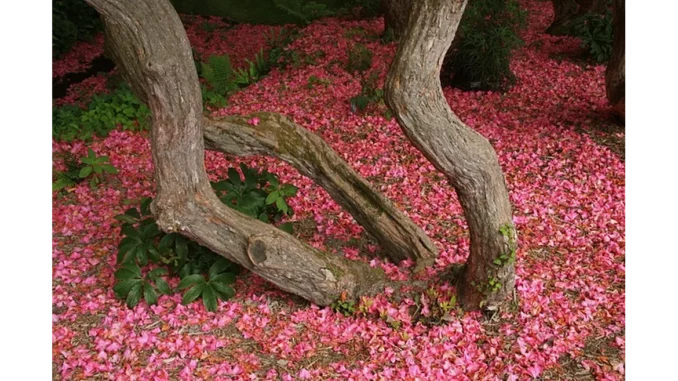
Transforming Your North-Facing Garden: Expert Strategies for a Lush Oasis
Gardens are cherished sanctuaries, offering a tranquil retreat to unwind, entertain, and connect with nature. Yet, the orientation of your garden plays a crucial role in determining its design and the types of plants that will flourish. North-facing gardens, in particular, present unique challenges and opportunities. With limited direct sunlight, these gardens can be cooler and shadier, but with the right design strategies, they can be transformed into lush, inviting spaces. Here, we delve into the intricacies of designing a north-facing garden and offer expert tips to maximise your outdoor haven.
Understanding the Dynamics of a North-Facing Garden
A north-facing garden is oriented towards the north, meaning the house or building it is adjacent to lies to the south. In the Northern Hemisphere, such gardens receive less direct sunlight throughout the day, resulting in cooler temperatures and more shade. This can significantly influence both the types of plants that will thrive and the overall garden design.
In the UK, a north-facing garden typically receives limited direct sunlight. These gardens benefit from some sunlight early in the morning and late in the evening during summer months, but for most of the day, they remain in the shade. During winter, the amount of sunlight diminishes further due to the lower angle of the sun. The specific amount of sunlight can vary depending on the garden’s surroundings and any obstructions, such as buildings or trees.
Crafting an Effective Garden Layout
Designing a garden layout for a north-facing garden requires careful planning to make the most of limited light:
-
Garden Zoning: Segment your garden into zones based on light levels. Allocate the darkest areas for shade-loving plants and cosy seating areas, and place garden furniture where natural sunlight is more abundant.
-
Brighten Pathways and Patios: Opt for lighter-coloured materials for paths and patios to reflect light and brighten the space.
-
Vertical Gardening: Utilise walls, fences, and trellises to add interest and maximise garden space with vertical planting.
-
Movable Pots: Use pots that can be repositioned to capture seasonal light, allowing for adaptability to changing conditions.
-
Garden Rooms: Create dedicated outdoor spaces that can be fitted with artificial lighting to extend usability.
Enhancing Your Garden with Design Elements
Incorporating a variety of design elements can elevate the beauty and functionality of your north-facing garden:
-
Mirrors and Reflective Surfaces: Garden mirrors and other reflective surfaces can amplify light, making the garden appear brighter and more spacious.
-
Water Features: Water features not only create a serene environment but also reflect light, enhancing the garden’s brightness.
-
Light-Coloured Materials: Choose light-coloured materials for paths, patios, and garden furniture to reflect light and uplift the space.
-
Bright Foliage: Select plants with bright or variegated foliage to infuse colour and interest in shaded areas.
-
Focal Points: Establish focal points with statues, ornaments, and striking plants to draw attention and add aesthetic value.
-
Wildlife-Friendly Features: Invest in bird feeders, bird baths, and insect hotels to support local wildlife and bring more vibrancy to your garden.
Selecting the Right Plants
Choosing plants that thrive in low-light conditions is pivotal for a north-facing garden:
-
Shade-Loving Plants: Ferns, hostas, astilbes, hellebores, and ivy flourish in low-light conditions, making them ideal for shaded areas.
-
Evergreens: Evergreen plants such as boxwood, yew, and holly provide year-round structure and colour without relying on abundant sunlight.
-
Climbers: Shade-tolerant climbers like clematis, hydrangea petiolaris, and ivy can beautifully cover walls and fences.
-
Woodland Plants: Foxgloves, primroses, and anemones naturally grow in shaded settings, adding a touch of woodland charm.
-
Spring Bulbs: Planting spring bulbs like snowdrops, crocuses, and daffodils can provide early-season bursts of colour.
-
Autumn and Winter Plants: Seasonal plants such as cyclamen, winter aconites, and heathers can offer off-season vibrancy.
-
Native Plants: Native plants support local wildlife and enhance biodiversity. Consult your local nursery for the best options.
Illuminating with Artificial Lighting
Artificial lighting solutions can mitigate the effects of limited natural light:
-
Garden Lighting: Install garden lights to highlight features and extend garden use into the evening.
-
Solar Lights: Place solar-powered lights in areas that receive some sunlight to add a soft, ambient glow.
-
Fairy Lights: Drape fairy lights around trees, shrubs, and structures to illuminate dense shaded areas whimsically.
Maintaining Your North-Facing Garden
Regular maintenance is essential for a thriving north-facing garden:
-
Mulching: Use mulch to retain soil moisture, as shaded areas can become dry.
-
Pruning: Regularly prune trees and shrubs to prevent excessive shading.
-
Soil Improvement: Enrich the soil with compost and organic matter to support healthy plant growth.
-
Pest Control: Monitor for pests common in shady, damp conditions and use sustainable methods to manage them.
While a north-facing garden may present challenges, it also offers unique opportunities. By understanding light levels, selecting appropriate plants, creating zones and focal points, and employing artificial lighting, you can transform your north-facing garden into a lush, inviting oasis. With diligent maintenance, your garden will flourish, providing a serene retreat for years to come.


Be the first to comment